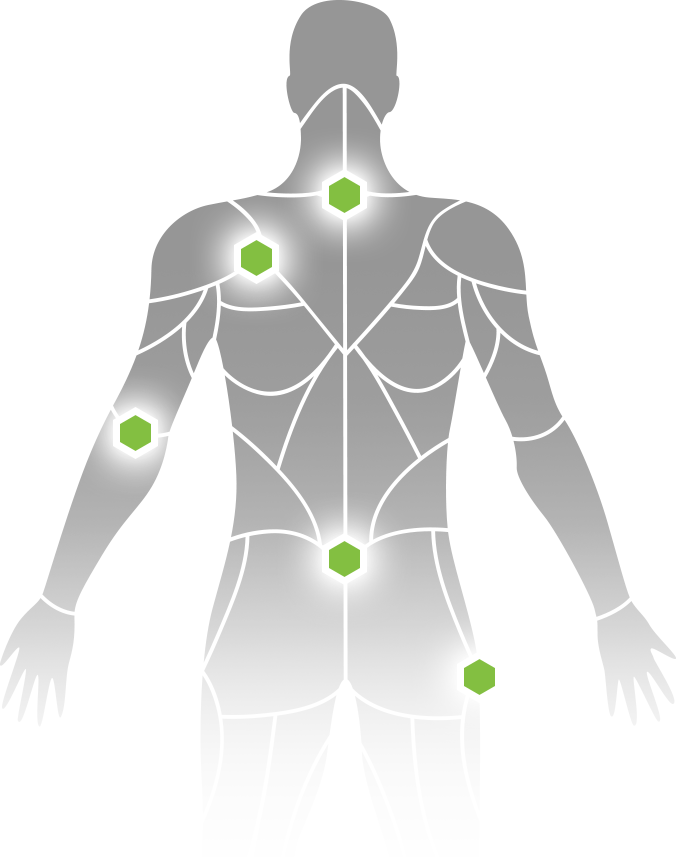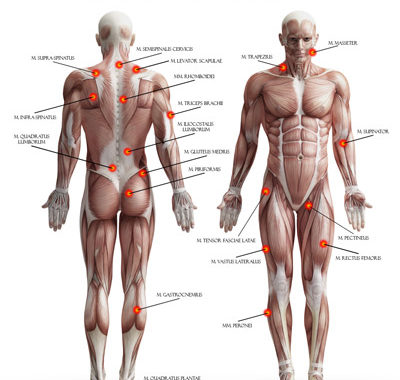
Myofascular Pain Syndrome, or MMPS, is a condition where muscle pain occurs with no obvious cause. MMPS is not recognized by mainstream medical science as a disease, but is believed to be one. Myofascular pain syndrome is an inflammatory condition that causes localized pain in the skeletal, musculoskeletal structure. This pain is usually limited to a specific area. In some cases, the pain can also be in what appears to be another part of your body.
Some of the symptoms of this condition include severe pain associated with fatigue, tenderness, or stiffness of muscles, decreased ability to move your limbs or muscles, headaches, and joint pain. People suffering from this condition are typically over 40 years of age and have multiple conditions and injuries affecting their muscles. Some conditions that are suspected of being linked to myofascial trigger points are arthritis, chronic back pain, carpal tunnel syndrome, fibromyalgia, osteoarthritis, muscle spasms, and sciatica. Muscle tightness may also accompany this condition.
One of the most common causes of this condition is a herniated disc. This is a condition where the soft, cushioned disc between your vertebrae has been compressed. This compression can cause nerve roots to be pinched between the bones. An injury to the nucleus pulposus is also a possible cause of this condition.
Muscle tension can also cause this condition. When the muscles are tense, the tendons and nerves get inflamed. The resulting inflammation results in pain that originates in the muscles, which may be felt in the back, neck, shoulders, and even the buttock.
Some theories about the cause of this condition include myofascial trigger points, which are places where muscle tissue protrudes from the joints. Other causes are infections, stress and trauma to the joints, and abnormalities in how the body’s nervous system interacts with the muscles. Many of the symptoms associated with this condition may also be related to muscle spasms. Spasms are muscular contractions that result in the temporary paralysis of the muscle.
Muscle spasms can be caused by muscle strains, repetitive movements, or muscle pull or strain. In some cases, muscle spasms can also be caused by a herniated disc, which will cause the muscles to contract involuntarily. The resulting spasms can cause the muscle to become stiff. Muscle spasms can also be caused by the lack of blood supply to the muscles themselves. Muscle spasms can also occur in conjunction with another condition, such as anemia, chronic pain, or a vitamin deficiency.

If you suspect that you are having a myofascular trigger point or muscle imbalance, it is important to consult a chiropractor or massage therapist who specializes in treating these conditions. Massage therapists can often pinpoint a problem in your back, spine, or leg muscles. If the pain persists despite these treatments, a massage therapist can perform traction and/or manipulation on the affected area. A chiropractor can also use specific manipulation techniques that target the trigger point(s) of your condition.
Trigger point therapy is an effective way to treat and prevent further damage to muscle tissues caused by muscle spasms and/or trigger points. Trigger points can be relieved by traction or manipulation of specific muscle areas. Trigger point therapy can also be used to alleviate pain, strengthen muscles, and promote overall health.
Trigger point therapy is performed by a qualified massage therapist who uses a variety of hand motions to stimulate the trigger points in the patient’s muscles. These motions can work on the nervous system to provide pain relief, release tension, and encourage healing. Trigger point therapy is often combined with physical therapy, which focuses on strengthening and toning muscles and joint structures.
Trigger Point Therapy (TPN), along with massage therapy, is one of the most effective ways to relieve muscle pain caused by trigger points. Trigger points are painful muscle spasms that cause swelling, tingling, and/or stiffness, making them difficult to move, breathe, or stand.
Trigger Point Therapy is an excellent way to treat the symptoms of myofascial trigger points or muscle imbalances, but it is important to note that myofascial trigger point therapy should be used with caution. Trigger point therapy is a form of massage therapy and should be utilized under the direction of a qualified professional in order to avoid injury or unintended complications.
About the author